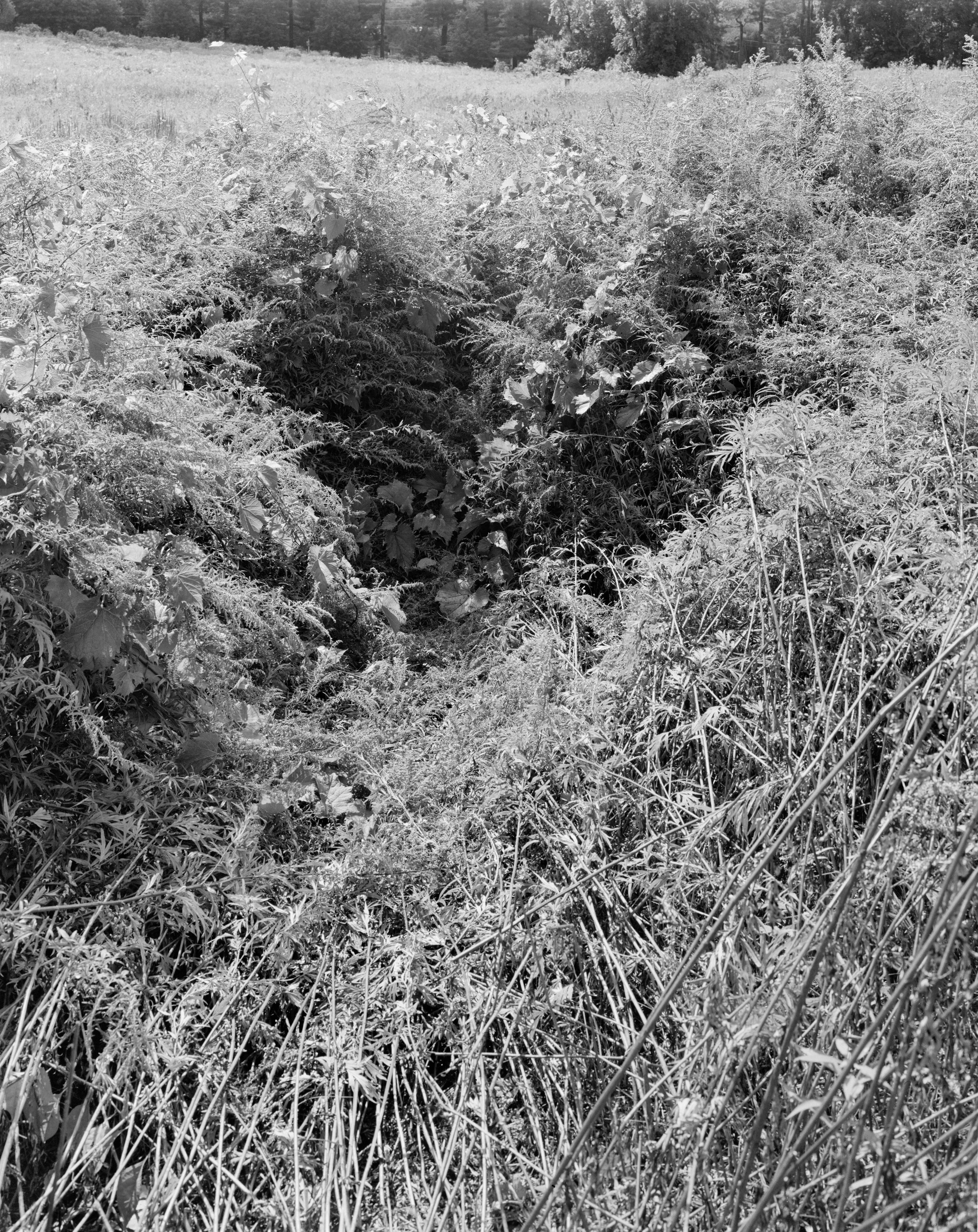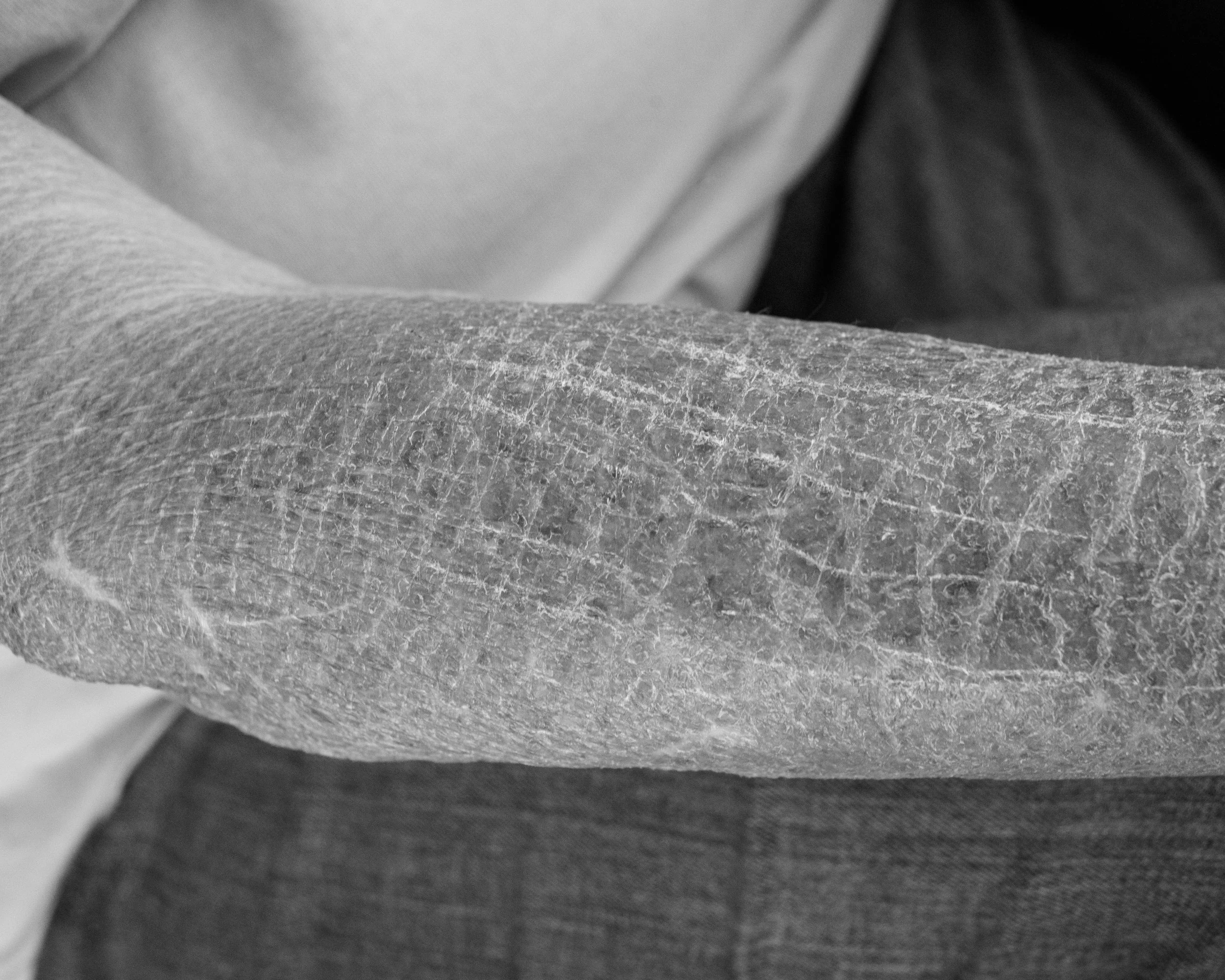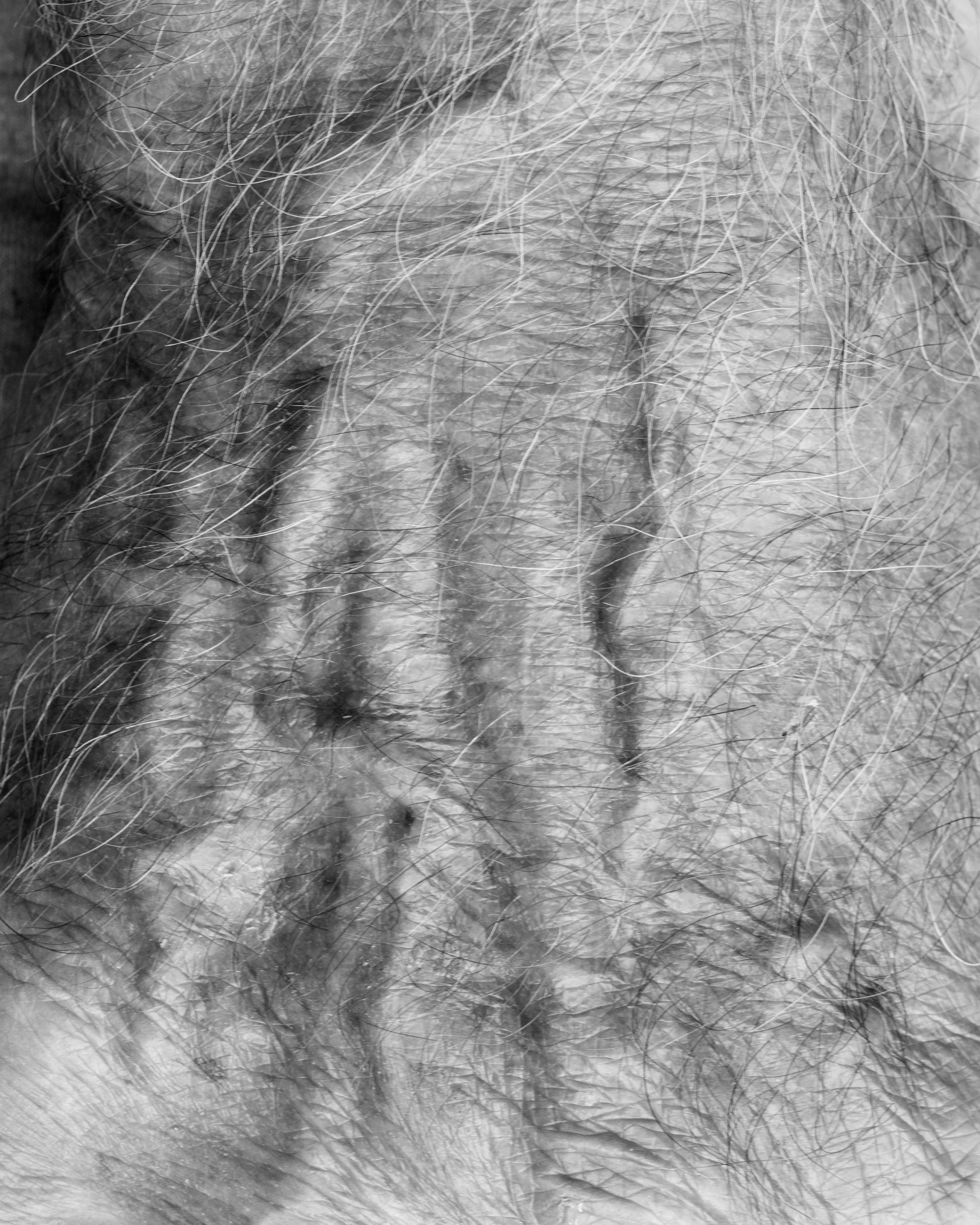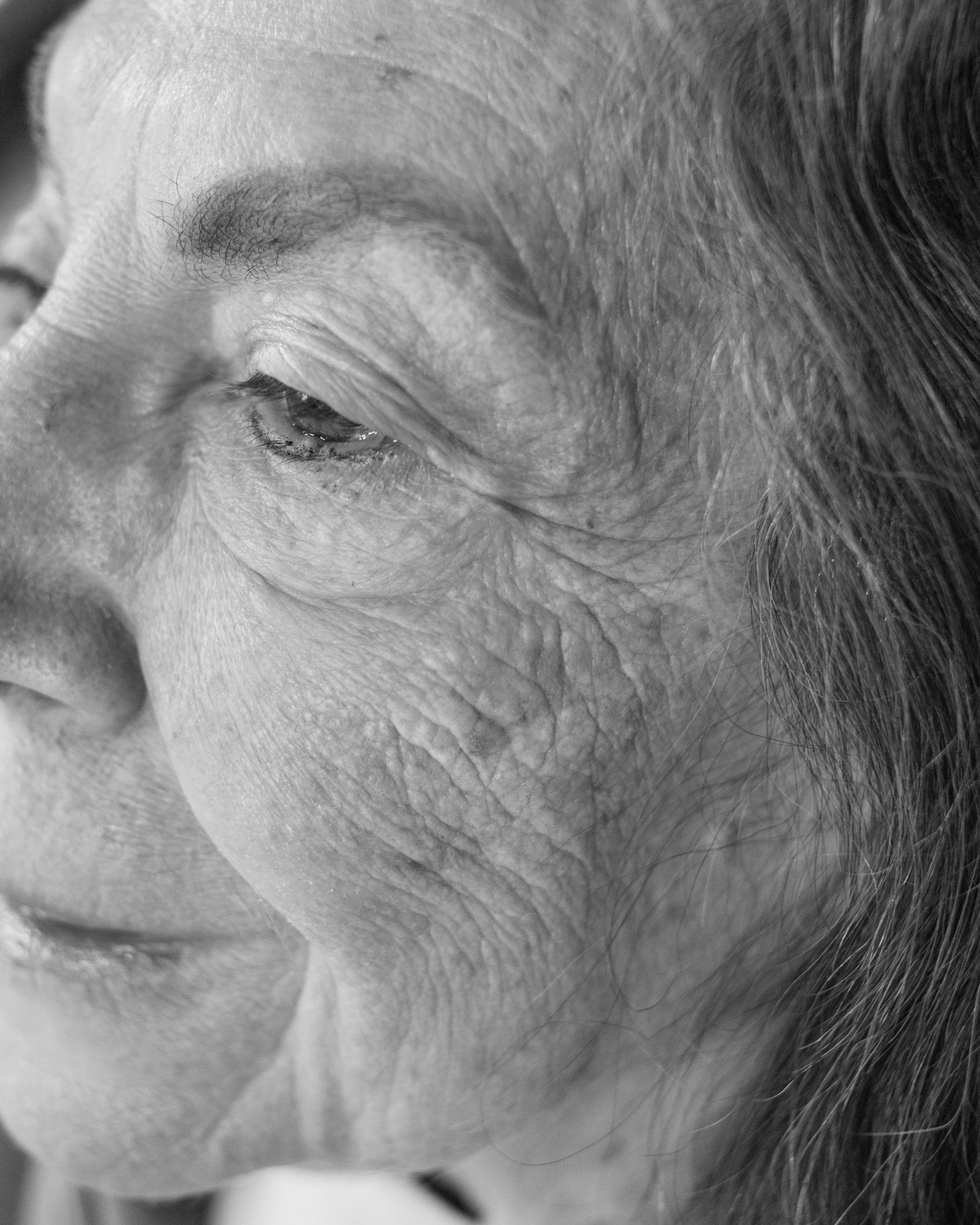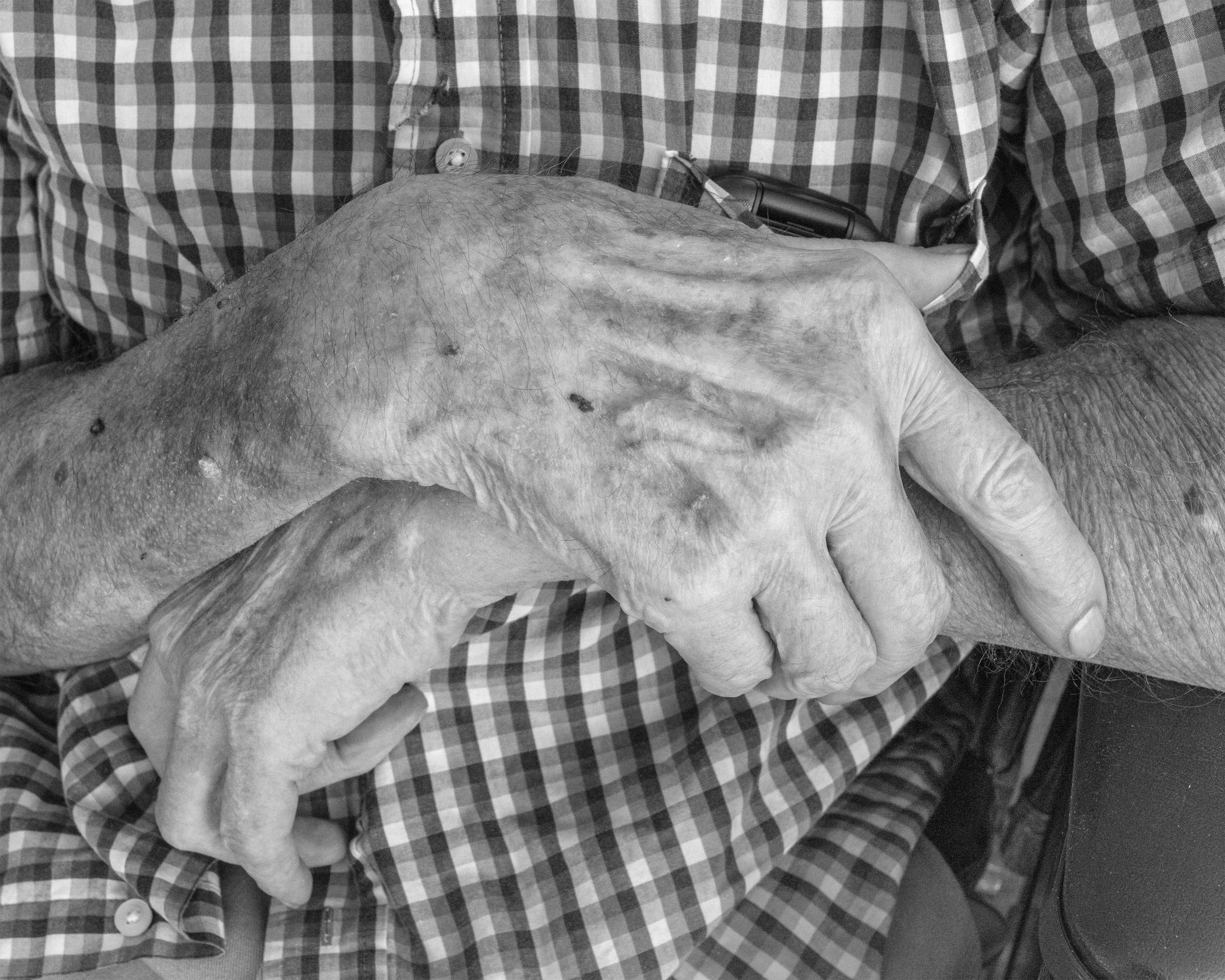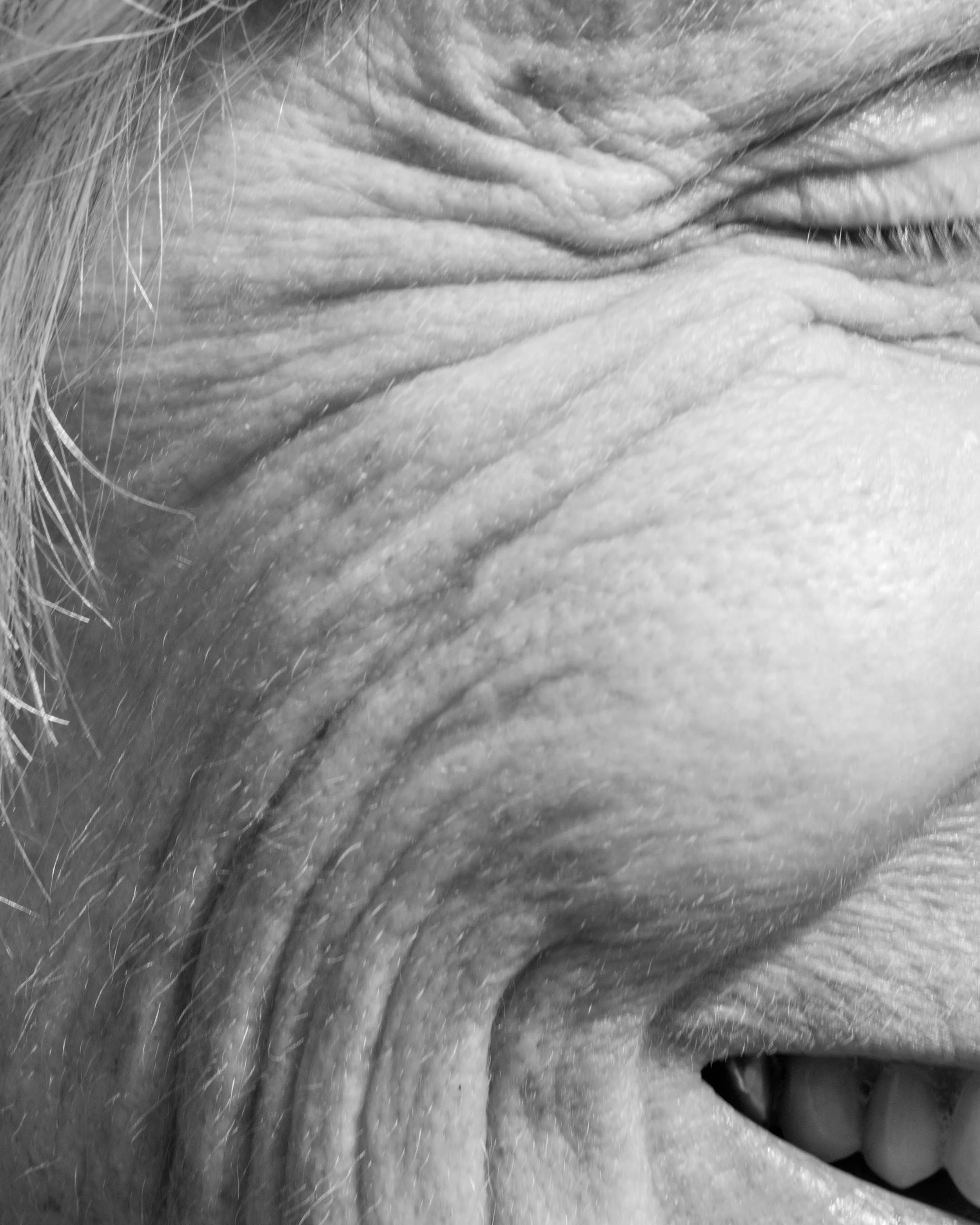I stood at the top of Burger Hill, and I stared at a sloping ocean of grass. Brittle stalks blended together, stretching downwards and into the distance. I imagined that the field might continue forever, uninterrupted, blanketing the world in placid continuity. It wasn’t enough, just looking at the hill. I wanted to participate in the land, to feel that I was a part of this larger world. And so I began to walk up and down the field, carving paths by trampling the tall grasses into flattened layers. My creations obeyed the landscape’s desires. The trails tended to bend whenever the hill dipped abruptly, or straighten when the slope evened. Carving furrows into fields became my way of existing with the land, and the paths I left behind were markings of my presence.
I am interested in skin as an indication of experience. Wrinkles are pronounced by age, when the skin becomes fragile and stops producing oil. Lines, coating the body in intricate patterns, are tangible proof of life. Their markings render the body as a product of the environment. But as I examined the skin of retirees, I began to also see its resemblance to the environment. It looked akin to the fields and overgrown landscapes I was photographing. Furrows lined a forearm in deep crevices. The arm became a series of hills and valleys. Veins traveled in tendrils, unfurled across cheeks scattered with wayward hairs. The face became a tree stretching its spindly branches into the sky. What if the body is not so much a product, as it is a part of the environment?
I chose to photograph my made-landscapes with a 4 by 5 View Camera because it made me more precise in my frame-making. I always set up the shot before I began walking, so that I could examine how the land moved and where I should walk. Often, I would walk part of a path and then hike back to the camera, just to ensure that my line stayed within the frame. The horizon line always felt like a disruption to the path’s sense of continuation, it indicates place, and so I often maneuvered it just-barely into the frame. Similarly, I did not want to photograph entire faces because I wanted to emphasize the skin. Eyeballs and noses could distract from elaborate markings, reminiscent of my landscapes. A digital camera allowed me to capture these close-ups of the retirees.
In the 1990s, Sophie Ristelhueber photographed the aftermath of the Persian Gulf War in Kuwait. Some of her images depicted the skin of war victims, detailing their stitches and scars in close-up frames. She paired these with distant landscapes, marred by craters and trenches. Impressions of the past scarred both her human subjects and her natural subjects, rendering the body as a sort of landscape. Her work characterizes the environment, displaying the effect of human actions through lasting wounds on the earth.
Richard Long walked back and forth across a field in 1967, producing a thin path of barren dirt. He photographed the land sculpture, titled A Line Made by Walking, and stated that he was “making a new way of art which was also a new way of walking: walking as art”. Long’s physical interactions with the environment were just as essential to his work as the resulting sculpture. When I walked down Burger Hill, I was acting purposefully so that I would feel present in the field. The result was an awareness of how the land moved underneath the field, informing what direction I should walk in. Long’s piece is often classified with Land Art, a movement that uses found materials in nature to produce ephemeral sculptures. Andy Goldsworthy is one such artist, who often says that he does not create lines in the land, but rather discovers them. He collaborates with the world, building leaf-sculptures that “explore and follow the contours of a rock”. It seems that Long and Goldsworthy both innately need to be with the world instead of within it, making work informed by nature.

